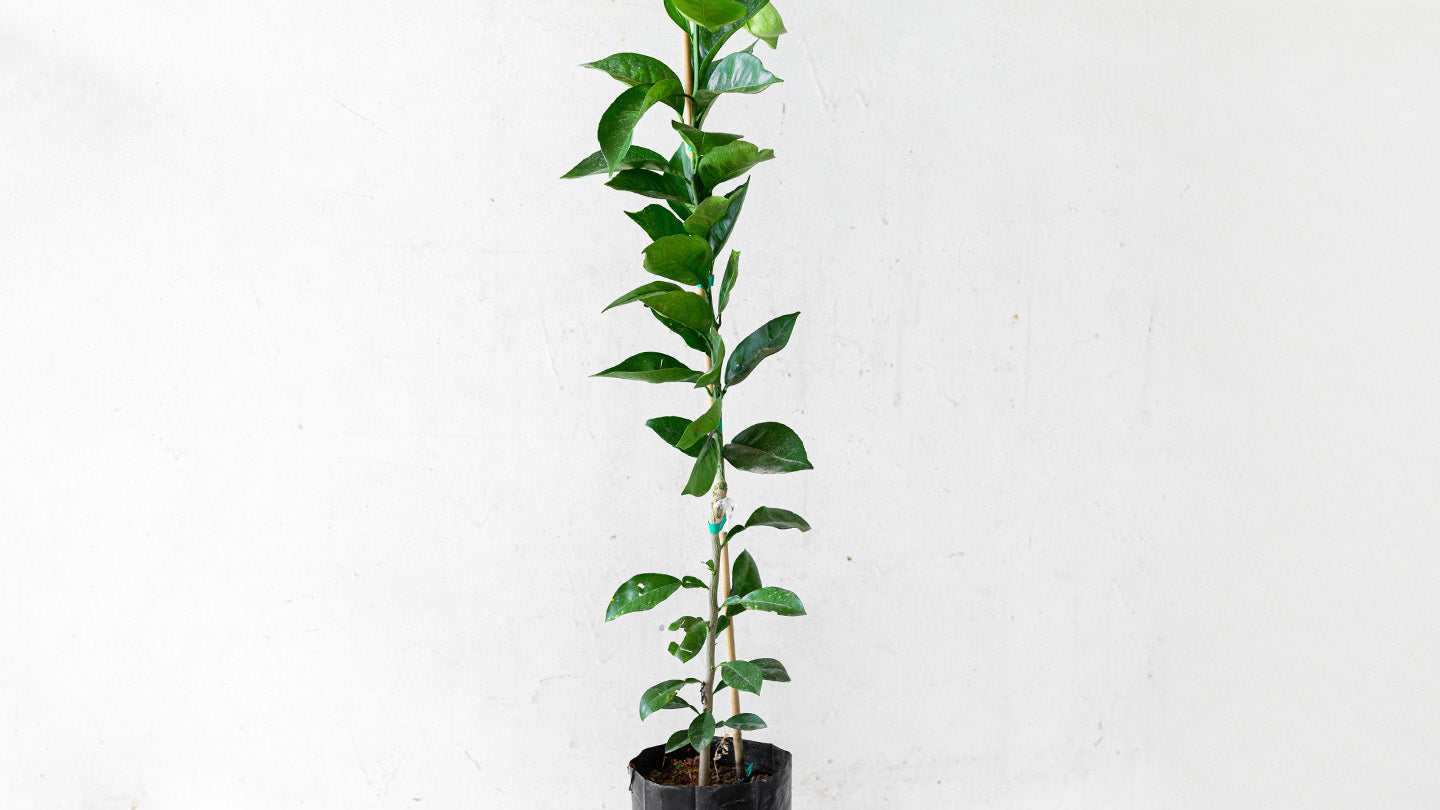cybloom
Citrus Tree (lemon/orange trees)
Regular price
€9,90 EUR
Regular price
€12,50 EUR
Sale price
€9,90 EUR
Unit price
per
Tax included.
Couldn't load pickup availability
Family: Rutaceae
Origin: Citrus plants are native to subtropical and tropical regions of Asia, Island Southeast Asia, Near Oceania, and northeastern Australia
The Size: A young Citrus tree will often fit in an 8-inch pot, which should last for three or four years before repotting is necessary. Make sure the container has ample drainage holes.
Temperature & Humidity: Citrus trees have a bit of cold tolerance, especially compared to some other fruit trees, and they can even withstand brief frost. But strive to keep it in conditions between 55 and 85 degrees Fahrenheit. Make sure heaters and air conditioners aren’t blowing on them, as this can cause extreme temperature fluctuations, and protect them from drafts near doors and windows. It’s also ideal to decrease the room temperature by 5 to 10 degrees Fahrenheit at night to mimic outdoor conditions.
Citrus trees like humidity levels between 50 and 60 percent but will do fairly well down to about 40 percent. To increase indoor humidity, especially during the winter months when forced-air heat can dry out the air, regularly mist the leaves of your tree. You also can place the container on a tray of pebbles filled with water, provided the bottom of the container isn’t actually touching the water. A cool-mist humidifier is another good way to optimize humidity levels.
Citrus trees like humidity levels between 50 and 60 percent but will do fairly well down to about 40 percent. To increase indoor humidity, especially during the winter months when forced-air heat can dry out the air, regularly mist the leaves of your tree. You also can place the container on a tray of pebbles filled with water, provided the bottom of the container isn’t actually touching the water. A cool-mist humidifier is another good way to optimize humidity levels.
Lightning: Those trees thrive in full sun, meaning they need at least six hours of direct sunlight on average. Even better is if you can give it eight to 10 hours of sun, though this can be difficult in the wintertime. Indoors, place your plant's container by your brightest window, and rotate the plant weekly. If possible, bring your potted kumquat outdoors to a balcony or patio in the summertime to rejuvenate it with plenty of natural light.
The Soil: Avoid letting the plant sit in soggy soil. While they do in fact like water, they can't tolerate sitting in oversaturated soil.
The Soil: Avoid letting the plant sit in soggy soil. While they do in fact like water, they can't tolerate sitting in oversaturated soil.
Watering: Proper watering is essential for kumquat trees. The goal is to keep the soil lightly moist but not soggy. If the soil feels dry to the touch about 2 inches down, then it's time to water until you see the water run out the bottom of the pot.
Fertilizer: A high-quality fertilizer that's specially formulated for citrus trees will encourage healthy growth, flowering, and fruiting. Fertilize starting in the spring, following label instructions.
Transfer: It's a good idea to move a potted kumquat tree outdoors during warm weather to ensure it gets plenty of light. It will greatly appreciate getting eight to 10 hours of direct sunlight if you have the right spot. This can help bolster a tree that hasn't been getting enough indoor sunlight.
Features of Care: For indoor growing are generally dwarf varieties that don't need frequent trimming, but you should prune your plant back as necessary each spring to keep the tree small and manageable. Make your pruning cuts at a 45-degree angle just above a leaf node, which will encourage full branching.
Turn the tree every week to ensure that all sides get equal sun exposure.
Turn the tree every week to ensure that all sides get equal sun exposure.


